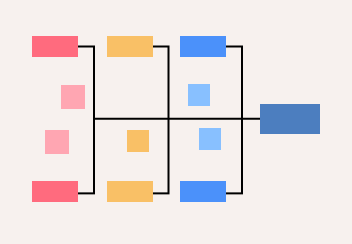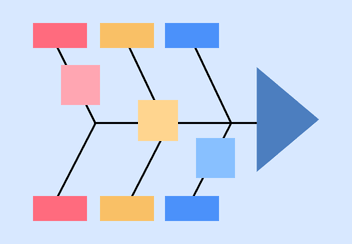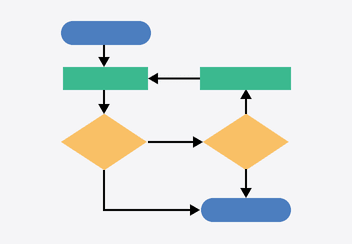- All templates
- Meeting & Brainstorming
- Fishbone Diagram Template
Fishbone Diagram Template

Uses of Fishbone Diagrams
A fishbone diagram helps you analyze a problem by visualizing its causes. The diagram takes the basic shape of a fish with the effect at the “head” and the causes listed along the branching “bones.” Organizations can use fishbone diagrams for many aspects of problem-solving. Common examples include:
- Developing and improving workflow processes
- Defining the source of operational issues or product deficiencies
- Communicating the reasons for changing a process or product
- Evaluating the influence related factors have on product outcomes
- Identifying and mitigating risk in specific processes
Given that fishbone diagrams are so versatile, you’ll surely come up with even more ways to use them!

How to create your own Fishbone Diagram
Open the Fishbone Diagram Template in Cacoo.
Add the effect, or problem, at the head of the fish.
Identify factors that caused the effect, and list them in the content boxes branching directly from the fish's “spine.” At this point, you should focus on broad categories.
Looking at each category, brainstorm factors that contributed to the cause. Try to come up with as many ideas as possible.
List each cause under its respective category. Keep analyzing each category to get closer and closer to the root causes of the problem.
Related tags
You may also like


